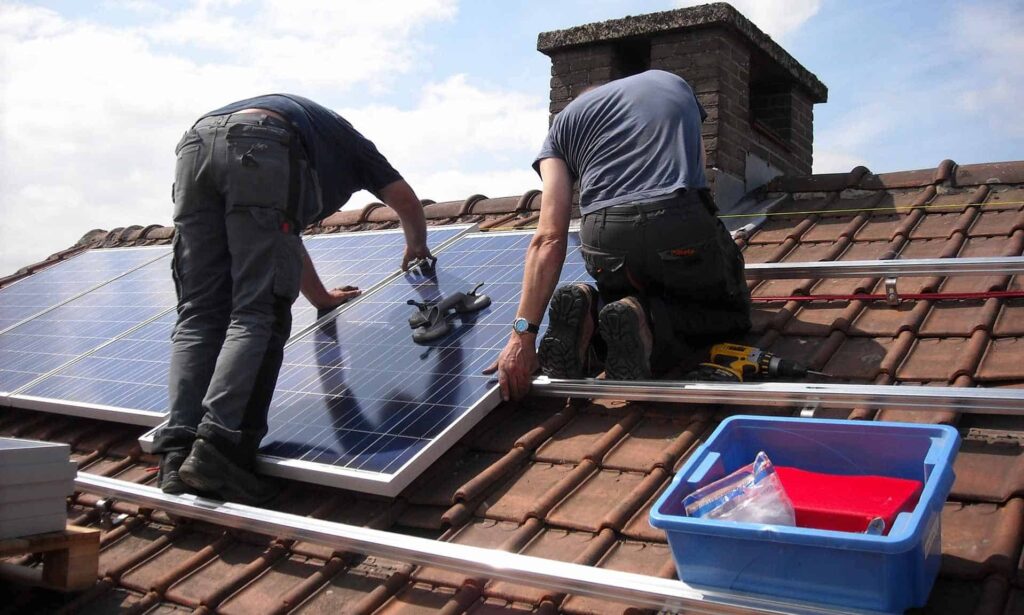Alternative forms of energy are interesting not only for businessmen, but for all of us. After all, the benefits and usefulness are obvious to everyone. If you have a private home or you are just beginning its construction, it is worth thinking about solar panels to make your home autonomous. But in this case there are certain peculiarities, which we will talk about in this article. And most importantly, let’s find out if it is realistic to install solar panels with your own hands.
The advantages of using solar energy:
- absolute environmental friendliness;
- solar energy is an inexhaustible resource;
- its production does not pollute the environment;
- autonomy of the house;
- no monthly payments for electricity.
How to choose a place to install solar panels

You’ve probably seen houses with shiny solar panels for home on the roof. It would seem that the place is obvious, but there are still rules in its choice. For maximum productivity, batteries are installed in the most illuminated spot in the entire yard. And this is not necessarily the roof. A plot of land with special supports placed on it will be suitable for this purpose. If this is your option, take care that the panels do not fall on the shadow of neighboring buildings, trees and large objects. Interestingly, polycrystalline models can still cope with the blackout, but the monocrystalline ones practically stop their work if the shadow falls on them.
There may not be any neighbors behind your fence yet, but they will surely appear in the future. This point must be provided for. If you still like the placement of solar panels on the roof or walls of the house, you need to maintain a certain distance between them. Rows should not shade each other if there are enough of them. In the context of the installation of alternative energy sources it is worth mentioning such an indicator as insolation. It refers to how much solar radiation falls in your area. The higher this indicator, the more energy the modules can generate.
How to install solar panels
- All work is done in warm and dry weather. The roof or other surface to be installed should be cleaned of debris, leveled (applies to installation on the site), degreased and in some cases treated with primer.
- When installing them, the correct azimuth and angle is incredibly important. By the way, there are panels on the market with the ability to change the angle of inclination.
- Important nuance – you need to expose the panels relative to the ground, not to the roof.
- Switching wires, jumpers, fasteners, longitudinal connectors, aluminum profiles, brackets and special supports for mounting on the ground can be purchased separately, depending on your preferences, goals and budget.
- Start the installation with a detailed study of the layout, which should be designed by yourself.
- Create a marking for the supports. They should be parallel to each other.
- Then drill holes and fill them with grease. Insert and hammer anchors or dowels into the holes. The anchors are attached to the roof support rails. Concrete roofing is much better to install than metal roofing.
- Warmed roofing felt is placed on the brackets, which should protrude beyond the edges of the panels. Ruberoid provides stability, strength and plasticity. Allow it to cool for a while.
- Finally, attach the hot-dip galvanized profiles to the brackets. Use aluminum fasteners. This is an excellent protection against corrosion.

- The installation of the cables comes next. The DC cable is fastened under the metal structure. Its job is to connect all the panels in the system and connect them to the switch and inverter. All wires are fixed to the back side of the profile with plastic clamps. Then the DC cables are led out to the transformer substation.
- The solar panels are attached to the profiles using a clamp to hold the structure in place. The clamp is mounted on the profile with two roofing screws.
- The transformer substation is attached to the wall of the house using dowels. Then, using an electric cable, connect it to the city power line.
- For an above-ground installation, you will need supports made of aluminum tubes or galvanized steel. They are poured in concrete or simply dug into the ground. A frame of natural wood and aluminum beams is installed on such supports. Aluminum insures the natural material, because wood is afraid of moisture.
Of course, you do not need a license to build a power plant at home. If you have the desire, time and you are confident in your abilities, you can do the installation of solar panels yourself. But remember that if at least one of the cables is connected incorrectly, the entire system simply will not work, and in some cases may even break down. If you contact solar panel installation sydney service, it will cost more, but you will get excellent results.

